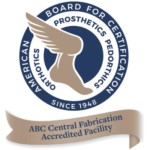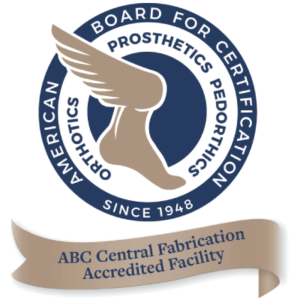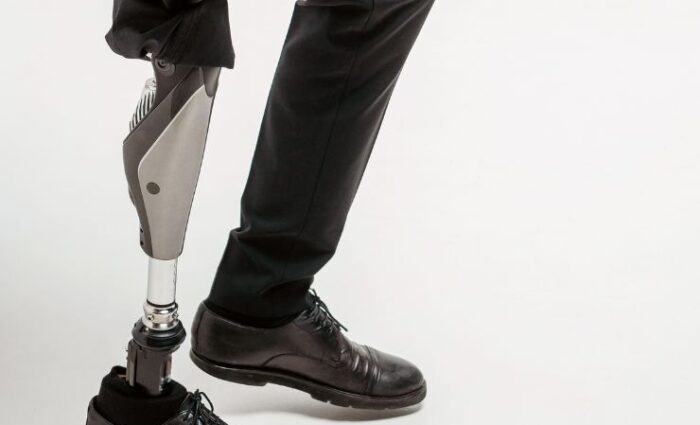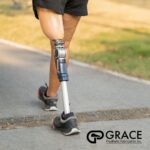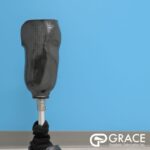Why Prosthetic Socket Knowledge Matters for Referring Providers
For clinicians working with patients experiencing limb loss, particularly those undergoing below-the-knee (transtibial) amputations, understanding lower limb prosthetics is crucial. A proper referral not only involves surgical precision and post-operative care but also sets the stage for long-term rehabilitation, quality of life, and patient satisfaction. While prosthetic legs are often discussed in terms of their foot components or microprocessor-controlled knees, the importance of the prosthetic socket cannot be overstated.
This guide will provide a clinical overview of prosthetic sockets in lower leg prosthetics, helping physicians and specialists better advise patients and collaborate with prosthetists.
What Are Prosthetic Sockets?
In the world of lower limb prosthetics, the socket serves as the crucial interface between the residual limb and the prosthetic leg. It transfers body weight, allows for functional movement, and significantly impacts comfort and mobility. A well-fitted prosthetic socket ensures the patient’s range of motion is preserved while minimizing skin irritation, pain, and instability.
Unlike components such as ankle joints, prosthetic knees, or foot prostheses, the socket is fully customized through a detailed prosthetic fitting process. Because every residual limb is unique in shape, volume, and sensitivity, the prosthetic socket must be fabricated with a high degree of precision.
Common Socket Designs in Lower Leg Prosthetics
Different clinical conditions, activity levels, and limb shapes require different types of prosthetic sockets. The following are the most common designs used in transtibial limb prostheses:
1. Patellar Tendon Bearing (PTB) Socket
This traditional socket design distributes weight primarily through the patellar tendon while relieving pressure from bony prominences and sensitive areas of the residual limb.
- Indications: Suitable for patients with good limb volume and well-conditioned soft tissue.
- Features: Anterior brim, reliefs for the tibial crest and fibular head.
- Clinical Consideration: PTB sockets may not be ideal for patients with poor tissue tolerance or fluctuating limb volume.
2. Total Surface Bearing (TSB) Socket
TSB sockets aim to distribute pressure uniformly across the entire residual limb surface. This design promotes even load transmission and reduces localized pressure points.
- Indications: Common for patients with stable limb volume and good skin condition.
- Features: Often used with gel liners to improve suspension and comfort.
- Clinical Consideration: Requires careful monitoring to prevent volume-related fitting issues.
3. Hydrostatic or Contoured Sockets
These sockets use a more advanced contouring approach to shape the interior of the socket to match the residual limb’s hydrostatic tissue load tolerance.
- Indications: High-activity patients or those with complex limb geometries.
- Features: Often paired with vacuum suspension systems.
- Clinical Consideration: Ideal for improving proprioception and limb control in active users.
Suspension Systems: Keeping the Socket in Place
Socket suspension refers to how the prosthetic socket stays securely on the limb. Proper suspension is essential for safe ambulation and user confidence.
1. Pin-Lock Suspension
Uses a locking mechanism at the end of a gel liner that attaches securely to the socket.
- Pros: Easy to don/doff, secure fit.
- Cons: May cause distal limb traction.
- Clinical Insight: Can be problematic for patients with sensitive distal residual limb tissue.
2. Suction Suspension
Relies on a one-way valve to create suction between the limb and socket.
- Pros: Even pressure distribution, more natural proprioception.
- Cons: Requires close volume control.
- Clinical Insight: Ideal for patients with consistent limb volume.
3. Elevated Vacuum Suspension
An external vacuum pump maintains negative pressure within the socket.
- Pros: Improved suspension, circulation, and residual limb health.
- Cons: Equipment complexity, higher cost.
- Clinical Insight: A preferred solution for active users and those with limb volume changes.
4. Sleeve Suspension
A neoprene or silicone sleeve creates a seal over the socket and liner.
- Pros: Low maintenance, quiet, easy to use.
- Cons: May cause heat buildup.
- Clinical Insight: Works well as a backup or secondary suspension system.
Advanced Prosthetic Fabrication Techniques
3D Printing in Lower Limb Prosthetics
3D printing has introduced new levels of customization and speed in prosthetic fabrication. Prosthetic sockets can be printed based on precise 3D scans of the residual limb, allowing for:
- Improved anatomical fit
- Rapid prototyping
- Lightweight designs
Clinicians referring patients for prosthetic fitting should be aware of this technology’s growing role. 3D printing allows for faster turnaround and more consistent duplication, especially valuable in cases requiring frequent adjustments.
CAD/CAM in Socket Design
Computer-Aided Design and Computer-Aided Manufacturing (CAD/CAM) technology is becoming standard in socket fabrication. CAD software allows prosthetists to digitally shape and refine socket models, which are then carved from foam or printed directly.
Benefits for clinicians include:
- Increased precision and reproducibility
- Digital records for future prosthetic fittings
- Ability to simulate range of motion and pressure mapping
Clinical Factors That Influence Socket Choice
When referring a patient for a prosthetic fitting, several clinical factors should be considered to help guide socket selection:
1. Residual Limb Characteristics
- Length, circumference, and shape
- Skin integrity and sensitivity
- Presence of bony prominences or scarring
2. Patient Comorbidities
- Diabetes and vascular conditions
- Skin disorders or pressure ulcer history
- Obesity or limb volume fluctuation
3. Amputation Level and Type
- Transtibial (below-the-knee)
- Partial foot amputations
- Joint involvement (e.g., near the knee joint)
4. Activity Level and Goals
The Medicare Functional Classification Levels (K-Levels) are used to categorize patients based on their potential mobility:
- K0: No ability to ambulate or transfer safely with or without assistance.
- K1–K4: Range from limited household ambulation to high-impact activities.
Higher K-levels may benefit from advanced socket systems and suspension types, especially when paired with microprocessor-controlled knee units (where applicable to above-knee users).
The Role of Interdisciplinary Collaboration
For optimal prosthetic outcomes, physicians, prosthetists, and rehabilitation specialists must work together to:
- Evaluate residual limb healing and readiness for socket fitting
- Monitor volume changes and adjust fit over time
- Communicate patient challenges, such as skin breakdown, instability, or gait asymmetry
- Educate patients about real-time symptom reporting and socket maintenance
Strong interdisciplinary care ensures that patients achieve a high level of functionality, safety, and comfort with their limb prosthesis.
Elevating Care through Informed Referrals for Lower Limb Prosthetics
Understanding the complexity and importance of prosthetic sockets in lower limb prosthetics allows referring providers to better guide patients through the amputation and recovery process. By staying informed about socket design, suspension systems, and new technologies like 3D printing and CAD/CAM, specialists can facilitate smoother transitions and higher success rates in long-term mobility outcomes.
As limb loss cases continue to rise, particularly due to vascular disease and diabetes, the role of the medical community in prosthetic success is more important than ever. Recognizing that lower leg prosthetics are not one-size-fits-all enables more personalized, effective, and supportive care for individuals adapting to life after extremity amputations.
Contact Grace Prosthetic Fabrication for lower limb prosthetic fabrication.

